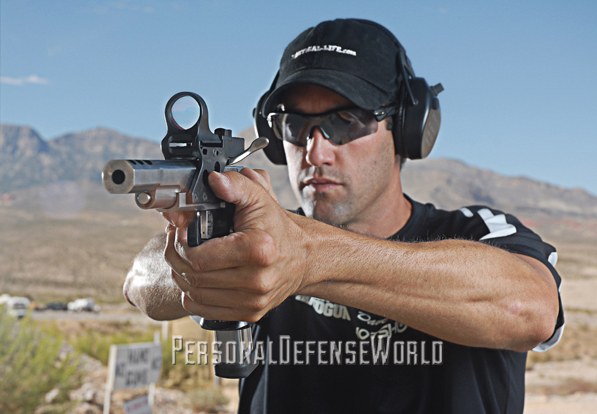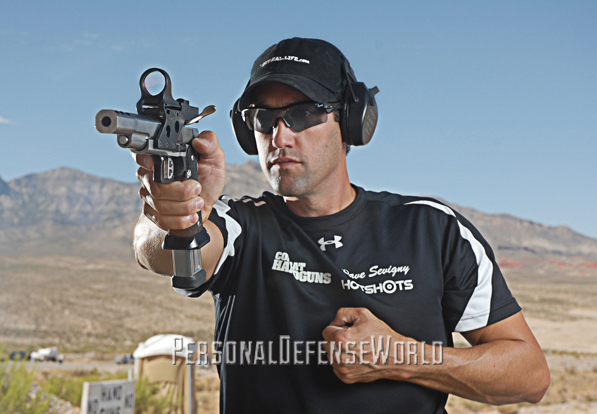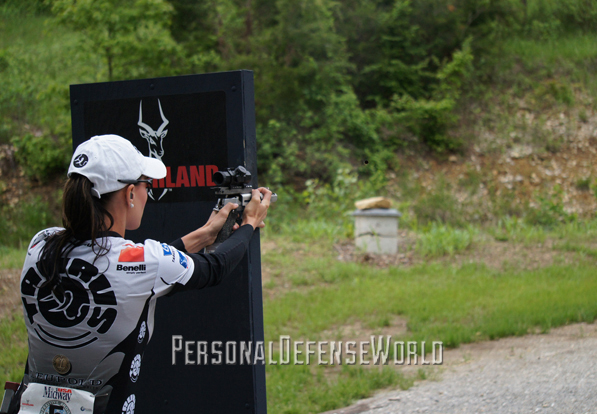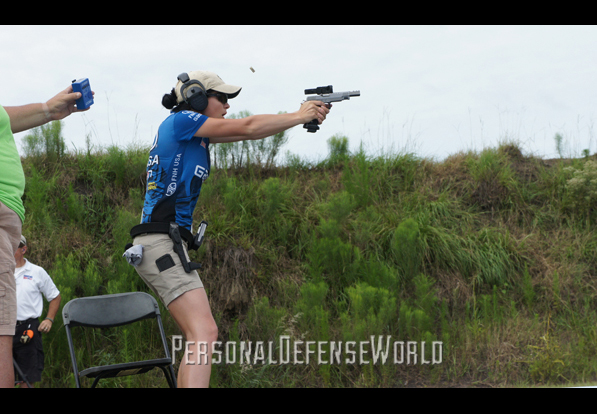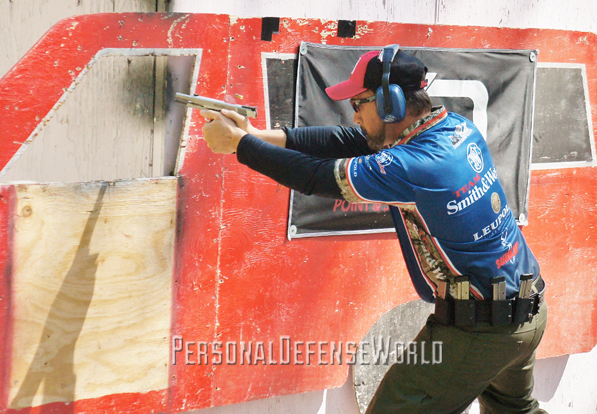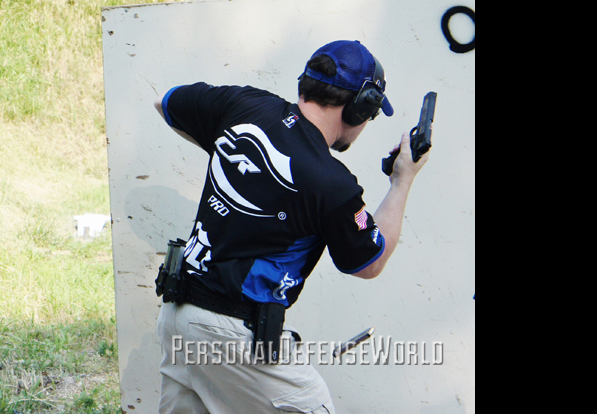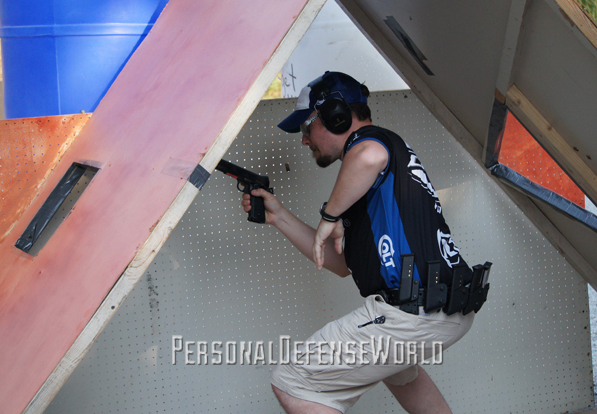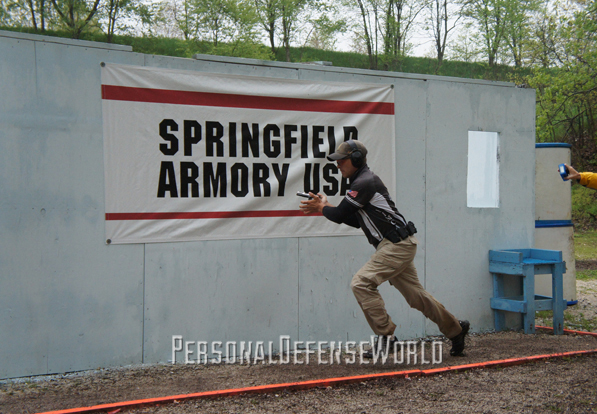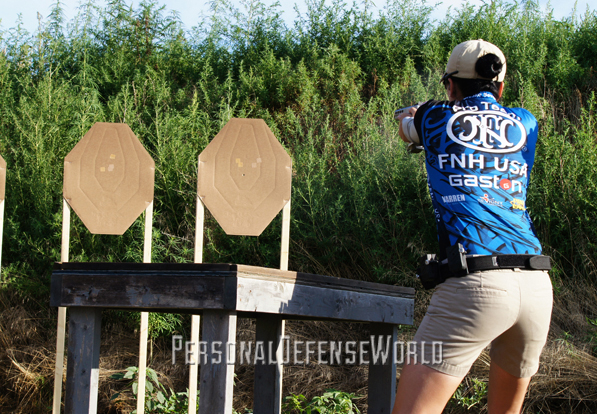Remember, “slow is smooth and smooth is fast.” In essence, practice the basics slowly, smoothly, until you can increase your speed.
“Get some self-defense training.” “You need training if you’re going to carry a gun.” The boom in new CCW permit holders has created a parallel boom in the training industry. Everywhere you turn, there’s a new training company or trainer hawking their certifications and skills. But how can a shooter new to competition or self-defense know which training is best to get? How can we sift through the chaff to find to find the best training available? Here are some handy tips on how to spend your training dollar wisely.
Set Your Goals
The first thing to do before you find a trainer is know what you’d like to do with your time. Do you want to become a top-notch competition shooter or do you want to sharpen your skills for self-defense and protection? While your competition shooting skills can certainly benefit from a self-defense class and vice versa, picking trainers that specialize in the skills you want is smart. These goals don’t have to be overly specific, either. For example, a great goal for a novice shooter could be as simple as “improve my gun-handling skills.” The more advanced your skills get, the more focused your goals will become.
Advertisement — Continue Reading Below
To help drive improvement, structure your goals so that they feed into each other. Mike Seeklander, a top U.S. Practical Shooting Association (USPSA) Grandmaster and self-defense trainer, uses this method in his training. For example, if you have an end goal to win your class/division at your state’s International Defensive Pistol Association (IDPA) Championship, then a goal to “feed” that goal would be “improve my draw time by 0.25 seconds” or “improve my accuracy to only drop an average of one point per stage at club matches.”
Having goals will also help you choose a training company or trainer. There are trainers who specialize in teaching competition skills, trainers that focus on self-defense and trainers that teach a middle-ground approach. In general, the middle-ground approach focuses on skills—gun handling, man-ipulations and marksmanship—that can be applicable in both self-defense and competition shooting.
Make A Plan
Going out to the range and burning 1,000 rounds of 9mm seems like a good time, and it certainly is. But if you’re seriously trying to improve as a shooter, doing that without any sort of structure or training plan will just end up costing time and money. There are a ton of great training resources out there, and a good instructor can help you come up with a comprehensive training plan as well. However, trainers cost time and money, and taking a weekend off to attend a class may not be in the cards for everyone.
Advertisement — Continue Reading Below
Luckily, there are quite a few tre-mendous resources out there for de-veloping a training plan that you can do on your own. Here are a few of my favorite books: Your Competition Handgun Training Program by Mike Seeklander, Champion Shooting: Guar-anteed Results in 15 Minutes a Day by Ben Stoeger and Refinement and Repetition: Dry-fire Drills for Dramatic Improvement by Steve Anderson.
Videos are another great choice, and some of the best available are produced by Panteao Productions. Panteao uses top-notch instructors and competition shooters like Bob Vogel, Travis Haley and many others. One of the best methods is to pair video demonstrations with a written training plan, as a video will let you see the technique in ways that a book’s illustrations simply cannot.
Training Vs. Practice
Once you have a plan, it’s important to understand that there is a difference between training and practice. Keeping those two terms separate will help your long-term shooter development. Training is learning new techniques or modifying/refining existing techniques, and practice is repeating those techniques multiple times to eliminate deficiencies. Current Steel Challenge Steel Master B.J. Norris says, “Practice is taking stuff I already know and making it better.”
Advertisement — Continue Reading Below
One of the big roadblocks that a shooter can experience is the old tautology: I don’t know what I don’t know. This is where the professional training, whether it’s a video, a class or a book, becomes so important. It’s entirely possible to spend 1,000 rounds and hours on the range practicing a less-effective technique, or worse, a technique that’s just wrong. This is why training is so important. It often takes a critical eye from a third party to identify deficiencies in our techniques. A real, live trainer is better than a video or a book, and is always the preferable option for improving your shooting skills.
Avoid Red Flags
Now that you’re seeking professional training, there are some dangerous red flags to watch out for. Research your trainer before signing up for their class. Watch out for buzzwords, obvious marketing speak or lofty claims of results. For example, if a shooter with minimal competition shooting experience is saying that you’ll “make Grandmaster after taking my course,” watch out. Look for class reviews and after-action reviews online to see what students are saying about the instructor. The biggest red flag of them all? Don’t take a class from an instructor who won’t demonstrate the technique themselves. That’s a huge red flag in the shooting community, and it should be avoided at all costs.
Take the Class
When you’re at the training class, remember why you’re there in the first place: to become better at shooting your gun. Whether that’s in a life-threatening situation or for a trophy, the goal is simply shoot better. As such, you’ll want to keep an open mind. It’s entirely likely that you’ll be presented with techniques that are new and different from how you’re currently shooting. Try them out. Play with them in your own practice time. If you’re taking a competition shooting class from a top pro like Max Michel, understand that he does everything for a reason—to increase efficiency—whether that’s on
the draw, reloads or transitions. This is where your goal setting comes back into play, as you may decide that a specific technique won’t work for your goal.
Advertisement — Continue Reading Below
After the Class
Now that you’ve learned new stuff, it’s time to practice. How should you go about practicing a new technique? You’ve probably heard the old adage that “slow is smooth, and smooth is fast.” While that’s become a bit of cliché, what it’s really driving at is simple: Go smooth to increase efficiency, then increase speed as needed. Here’s a simple practice regi-men for a draw broken down into steps:
1. Do ten draw repetitions a slow as necessary to have as perfect a rep as possible.
2. Do ten draw repetitions on the clock with a slow par time that you know you can make 100 percent of the time.
3. Decrease the par time by 0.10 seconds and do 20 reps.
On your next practice session, start with the lowest par time as your new “No. 2 par” to gradually increase your speed. This short dry-fire session allows you to do three important things: work on speed, work on economy of motion and identify areas where you’re not working as efficiently as possible. It can also translate directly to live fire by simply adding shooting to the end of each rep. Once you’ve learned a new technique, you can use this simple and time-tested technique to increase your speed, whether it’s draws, reloads or any fundamental gun-handling skills.
Advanced Techniques
The truth is that when it comes to just shooting the gun, there is no such thing as an “advanced” technique. The difference between the great shooters and everyone else is that the great shooters execute the fundamentals faster and with more
precision than anyone else.
There are techniques, however, that are beyond the scope of marksmanship. Movement, tactics, stage planning—all of these are things that can be taught and practiced as well. A quality CCW instructor should be able to provide information on what tactics are appropriate for a lawfully armed citizen; a USPSA Grandmaster should be able to provide insight on the best way to break down a USPSA stage. Don’t get sucked in by trainers promising “secret ninja shooting techniques” because the real secret to shooting well isn’t a secret at all: It takes hard work and dedication.
Advertisement — Continue Reading Below
At the end of the day, shooting well or training for competition and self-defense is no different than any other form of physical training. There are no magical shortcuts. Watching highlight films of Hank Aaron won’t make you a better hitter unless you get into the batting cages and practice; watching Dave Sevigny shred USPSA stages on YouTube won’t make you a better shooter, either. The secret to successful training is to absorb information and then convert that information into skill via hard work and sweat. Any trainer or instructor that tells you otherwise is just trying to sell you something, and the odds are good that it’s not something you want to spend your money on.
Get some training. Practice your skills. As professional trainer Stephen Pinaue of M3 Strategies says, “Sharpen the blade.”
BUY NOW! AT www.personaldefenseworld.com/subscribe/handguns-buyers-guide/.
Advertisement — Continue Reading Below
